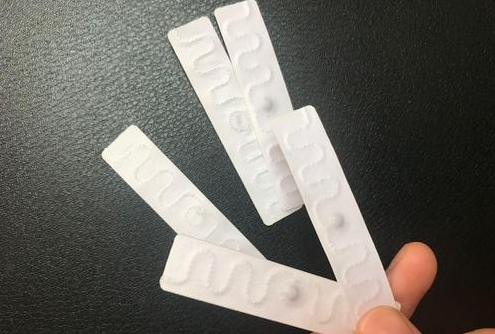With the continuous improvement of hotel service standards, linen (sheets, duvet covers, towels, etc.) in terms of cleanliness, turnaround time, and loss rate requirements are becoming more standardized.
● It is difficult for the traditional laundry management model to balance quality and efficiency, and the laundry plant is also facing multiple challenges:
· Rising labor costs
· Increasing difficulty in quality control
· Increasing customer demand for transparency and data management.
To meet these needs, more and more hotels and laundry plants are exploring the application of RFID tags (radio frequency identification technology) to linen management. More and more hotel linen laundry plants have also begun to consider and accept the addition of RFID tags in the hotel’s own linen. By digital intelligent management and automatic transformation, “cost reduction, efficiency improvement, and quality improvement” can be achieved so as to create a new competitiveness and a better partnership.
The hotel RFID linen project can not only improve the quality of service, but also open up new business growth points. However, many laundry plants face technical, cost and operational confusion as they move forward with this task. This article will explore how to understand and advance this task.
Current Situation and Pain Points of Laundry Plants
❑ Loopholes in the Traditional Management Model
• Error-prone manual counting and sorting
Linen is frequently transferred in washing, sorting, packaging and transportation. As a result, relying on manual or simple manual to manage data is easy to produce quantity differences and loss.
• Inaccurate quality control
Being unable to track linen washing times and linen damage will lead to excessive washing or over-use of some linen, which affects both the cost and reputation of the hotel.
❑ Cost and Efficiency Challenges
• High labor costs
Statistics show that the labor costs of some laundry plants can account for 30% to 40% of the total operating costs. Under the traditional process, the sorting and quality inspection links consume a lot of manpower.
• Lack of Customer Satisfaction
It is difficult to be satisfactory to both ensure the quality of washing and improve the efficiency of linen turnover and life extension without effective management means.
❑ Weak Digital Foundation
• Lack of data precipitation
Many small and medium-sized laundry plants have not yet established a complete IT system so it is difficult to provide customers with reliable digital reports or dock with the platform of large hotel groups.
• Intense Market Competition
With the rise of more and more laundry plants with intelligent management, traditional enterprises are easy to eliminate if they do not upgrade.
The Core Advantages of RFID Linen Solutions
❑ Real-time Tracking and Bulk Inventory
• Efficient Identification
RFID can scan a large number of linen at one time. The speed is more than 90% higher than manual efficiency. Although it is difficult to achieve 100% accuracy, it can also achieve accurate linen data through path tracking. Also, there is no need to align the label one by one.
• Accurate positioning
Combined with the layout of the reader in the key station, the circulation position and cleaning state of each piece of linen are immediately registered to improve the accuracy rate, especially in the distribution and storage of linen in the laundry plant, which must be 100% accurate.
❑ Reduce loss and misdelivery
• Automatic check-in and out
In the hotel collection and release of linen, or factory handover link, the system’s real-time comparison of quantity and category can reduce the risk of loss or misdelivery.
• Warning system
If the factory or hotel has RFID reader equipment just like the security gate, it can warn when the unauthorized linen is coming out.
❑ Prolong Lifespan of Linen
• Fine statistics
Automatically manage the washing times and damage records of each piece of linen, and accurately judge when to supplement or scrap, to avoid waste.
• Process optimization
Adjust the temperature, dosage of detergents, and washing cycle, and balance cleanliness and material loss to extend the life of the linen.
❑ Increase Customer Satisfaction and Brand Value
• Transparent operation
Washing records, wear and linen life are presented to the hotel in real time through the system, enhancing customer trust.
• Quality assurance
Reduce fault and misdelivery errors, and make the hotel more secure in the guest services.
Key Steps to Implement RFID Linen Project
❑ Choice of RFID and Linen
• Chip adaptation
Priority is given to RFID tags that are resistant to high temperature, waterproof, and chemical corrosion to ensure normal operation in ironing and high-temperature drying environments.
• Linen improvement
Suggestions on the optimization of linen purchase can be put forward together. Fabrics that are more washable and are easily embedded into the chip should be chosen. The linen can be developed jointly with chip manufacturers or linen suppliers.
❑ Embedding Position and Process
• Corners or seams
Sewing machines or hot pressing can be used to fix the edge area with less wear, avoiding negative impacts on the guest experience.
• Small batch testing
Before large-scale release, experimental washing and reading and writing tests are carried out to observe label wear, fall-off rate, and identification effectiveness.
❑ RFID System Selection and Connection
• The third-party solution
Laundry plants can directly purchase mature third-party RFID systems to reduce the risks and investment of self-research while getting professional technical support and subsequent upgrade services.
• Connect with the hotel group platform
Some large hotel groups gradually have their own linen management or laundry information platforms, requiring factory data to be connected with their systems. If the data interchange can be successfully achieved, it can improve its service recognition and competitiveness. It is also convenient for the hotel to check the washing progress and linen status in real-time.
Automation Improvement and Data Intelligent Management
❑ Automation of Equipment
• Key points of transformation
Automatic sorting and cache transmission equipment are set up behind the folder. After reading the RFID information, it can be automatically stacked or packaged according to the type of linen or destination.
• Ability upgrade
If the linen still needs further quality inspection or sorting, the placement of multiple automatic conveyor belts and induction equipment can increase the sorting accuracy to more than 99%, significantly reducing manual intervention.
❑ Production Process and Management System Optimization
• MES (Manufacturing Execution System) docking
The washing cycle and quality inspection results of each piece of linen should be imported into the MES system in real-time.
Automatically schedule machines, arrange manpower, and guide the production rhythm of the whole plant according to the amount of washing.
• Data board
Set LED in the production site, or an electronic bulletin board, which can real-time display the washing schedule, equipment state, and abnormal rate of linen, facilitate managers to make decisions quickly.
❑ Data Intelligence Management
• Intelligent scheduling
The cloud or local server is used to collect real-time data for automatic scheduling, material allocation, and energy consumption curve analysis.
• Accurate billing
Based on the washing volume and loss of RFID statistics, transparent and detailed cost settlement is carried out for each customer, reducing disputes and improving revenue management.
Comprehensive Value Mining and Future Development
❑ Data-driven Decision Making and Service Upgrades
• Linen life prediction
Predict the usable life of remaining linen based on historical data and current status, combined with machine learning algorithms, helping hotels plan replenishment in advance.
• Operating cost optimization
Calculate the relationship between the amount of washing water, electricity, and chemical agents and the durability of linen to find out the optimal “cleanliness - cost” balance point, based on which to improve the washing process, or negotiate the purchase price of detergent.
❑ Hotel Group Interaction and Cooperation Depth
• Improved service level
Seamless connection of washing data to the hotel group’s washing management platform can provide real-time information such as the quantity of linen in the warehouse and estimated delivery time, reducing questions about washing standards and processes.
• Strengthen competitive barriers
At present, since the laundry industry generally has not yet reached a high level of information technology, the first plant to complete the system docking and output transparent, visual data factory is more attractive in cooperation and has more pricing power in negotiation.
Risks and Countermeasures in the Implementation Process
❑ Staff Training and Management Change
• Training needs
The operation of new equipment and new systems requires professional training, which may be difficult for grass-roots staff to adapt to.
• Response
Set up a special training team, invite equipment suppliers, with software to provide technical support, and in the early online with appraisal incentive mechanism, to help the team to a smooth transition.
❑ Data Security and Platform Compatibility
• Information protection
Leakage of the washing process, linen use, and financial data will endanger the interests of both the factory and the hotel.
• Docking system
Different hotel group platform interfaces of different hotel group have different requirements. Reserving a custom development and maintenance costs is needed to balance the flexibility and stability.
Conclusion
The hotel’s own linen with RFID is not only a technological upgrade, but also the entrance to the transformation of the laundry plant into digital intelligence and unmanned management. By selecting the right chip and system suppliers, planning automated production lines, and promoting the interconnection and sharing of data with hotel groups, laundry plants will be able to stand out in the fierce market.
Only by seamlessly connecting the preliminary program demonstration, equipment selection, staff training and subsequent operation and maintenance management, can we achieve the dual goals of cost reduction and efficiency. It also improves service quality, establishes irreplaceable core advantages for enterprises in the future competition. For those in the laundry industry who are still watching, grasping this opportunity is both a challenge and the key to a breakthrough.
Post time: Mar-24-2025






